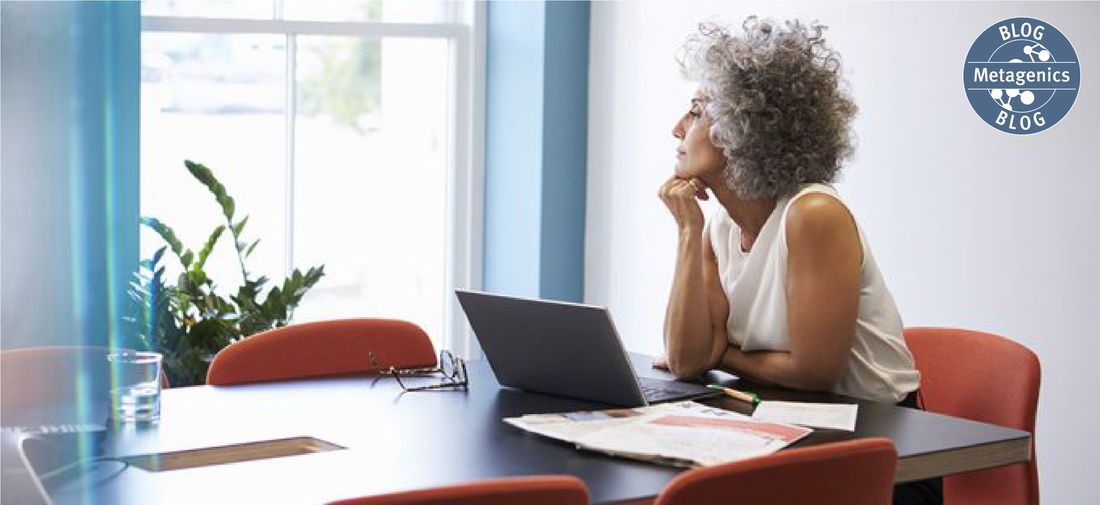|
Many of us (men and women) have had moments where we sneezed and lost control of our bladder, or we had a coughing attack and sprang a little “leak.” But for women in menopause, urinary leakage can occur more frequently and cause embarrassment and concern. Urinary incontinence is actually common during this time in a woman’s lifespan and can be the result of one or more causes. Fortunately, there are many ways to address this problem.
What is urinary incontinence?Simply put, urinary incontinence is the involuntary leakage of urine.1 Up to one-third of men and women in the US have urinary incontinence,1 but it is older women—those going through perimenopause and menopause—who most often develop stress urinary incontinence (SUI).1 Urge incontinence (UI) is also common in postmenopausal women; also known as overactive bladder (OAB), the condition results in a fast, urgent need to urinate, accompanied by urine leakage.2 Bend. Lift. Leak.As time marches on, children are born, and estrogen levels drop, the pelvic floor muscles that support the bladder and other organs can naturally weaken and become stretched. Less support means less ability to hold urine, and when the urethra (the duct where urine comes out of the body) is challenged by a good sneeze or lifting a box, it can leak out a few drops, or up to a tablespoon or more.1 This is SUI, and a decline in estrogen levels plays an important role in its development during menopause, at which time the tissues of the urogenital tract can weaken and become thin.3,4 Additionally, giving birth multiple times, or traumatic vaginal birthing, can contribute to SUI in menopause.4 Gotta go—now!Urge incontinence (UI) is the sudden urge to urinate, often accompanied by urine leakage. In addition to the weakening of pelvic tissues during and after menopause, UI may be caused by a lack of coordination between the brain and bladder, with the signal to urinate being sent by the brain at the wrong time.5Other symptoms of UI include urinating more than eight times per day and more than once at night (nocturia).5 What can be done about urinary incontinence?There are several ways to help make it easier to deal with urinary incontinence. You may start by refraining from alcohol and caffeine; stopping drinking liquids close to bedtime; wearing a disposable pad designed to absorb urine; and maintaining a healthy weight. There are also more comprehensive methods available to address urinary incontinence. Pelvic floor strengthening exercise--The beloved Kegel exercise is a well-known way to help strengthen pelvic floor muscles and possibly eliminate bladder leakage.6 By contracting and relaxing these muscles repeatedly, they can be strengthened and provide better bladder support. Where are your pelvic floor muscles? If you can stop urinating midstream, you’ve found them.6 Ask your healthcare practitioner for information on how to perform the Kegel exercise. Pessary--This small device is inserted into the vagina to help support the pelvic organs and is also used to treat urinary incontinence. Fitted by your healthcare practitioner, a pessary is removable, minimally invasive, and discreet. There are also over-the-counter, disposable bladder supports available that are self-fitting.7,8 Biofeedback--Small sensors are discreetly placed on the body and used to measure what the pelvic floor muscles are doing, as well as provide feedback to help teach you how to control the pelvic floor muscles.9 Medication--Drugs that are designed specifically for urinary incontinence can be used alone or with a method such as biofeedback; they work primarily by relaxing the bladder muscle and increasing the amount of urine the bladder can hold.10 Surgery--While surgery is more invasive than other ways that address urinary incontinence, it can also successfully resolve it. Procedures such as sling surgery and bladder neck suspension can help keep the urethra from moving down and opening accidentally.11 No matter which method you wish to try, always ask your healthcare practitioner about which is right for you. He or she knows your personal health history best and can help you find relief from menopausal urinary incontinence. This information is for educational purposes only. This content is not intended as a substitute for professional medical advice, diagnosis, or treatment. Individuals should always consult with their healthcare professional for advice on medical issues. References:
0 Comments
Leave a Reply. |
Categories
All
Archives
April 2024
|
|
Join Our Community
|
|
Amipro Disclaimer:
Certain persons, considered experts, may disagree with one or more of the foregoing statements, but the same are deemed, nevertheless, to be based on sound and reliable authority. No such statements shall be construed as a claim or representation as to Metagenics products, that they are offered for the diagnosis, cure, mitigation, treatment or prevention of any disease. |



 RSS Feed
RSS Feed